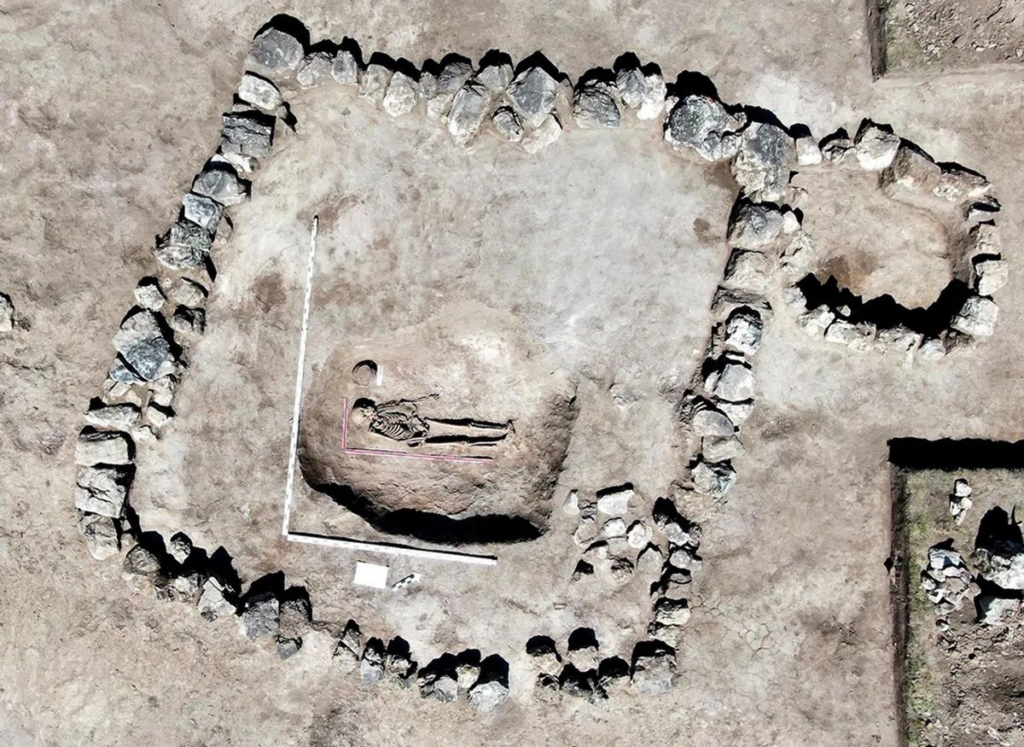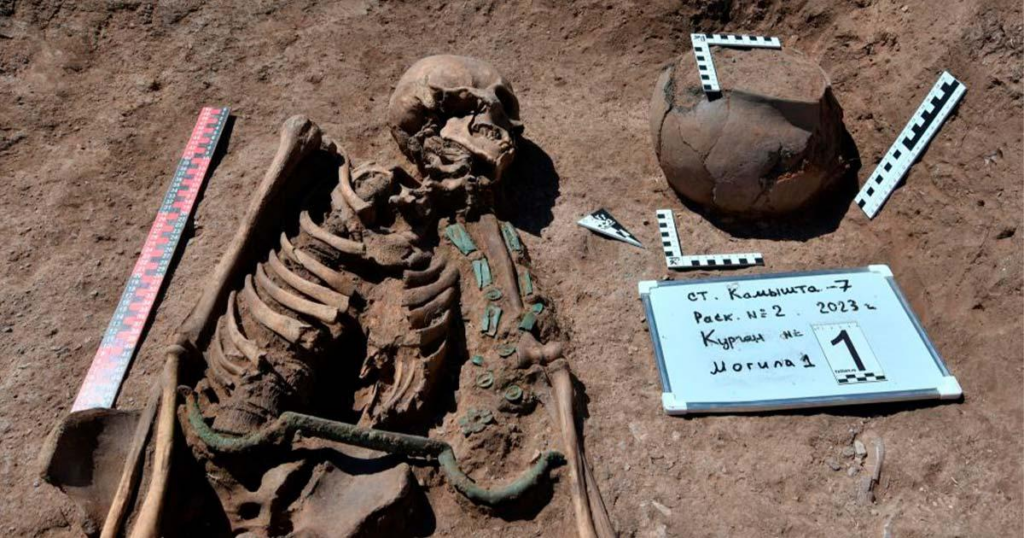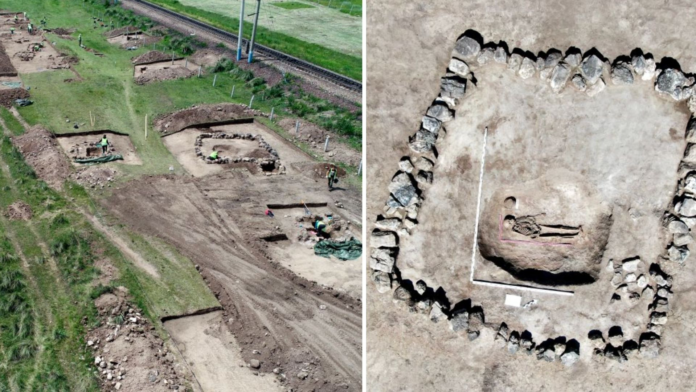Unearthing a 3,000-Year-Old Mystery in Southern Siberia

In the remote landscapes of southern Siberia, Russian archaeologists have made a groundbreaking discovery that challenges our understanding of the region’s ancient past. While working on a railway expansion project in the Republic of Khakassia, they uncovered a remarkably preserved grave containing the remains of a charioteer from around 1,000 BC. This finding provides compelling evidence that chariots were in use in this part of Asia much earlier than previously thought.
The Charioteer’s Final Resting Place

The grave, expertly constructed with stone lining and protected by an earthen mound, revealed not only the charioteer’s skeletal remains but also a crucial piece of equipment – a long metal rod with curved hooks at each end. This artifact, similar to those found in neighboring regions like Mongolia and China, was used by chariot drivers to control their horses, allowing them to wrap the reins around their belts for better control.
Redefining Bronze Age Siberian Cultures
This discovery sheds new light on the Lugav culture, a Bronze Age civilization known for their cattle breeding and horsemanship. The elaborate nature of the burial suggests that charioteers held a position of high regard in Lugav society. As the archaeological project progresses, researchers have uncovered evidence of three distinct Bronze Age cultures in the region – the Karasuk, Lugav, and Tagar – painting a picture of a dynamic area with changing demographics and far-reaching trade networks.
Chariots: Revolutionizing Ancient Mobility

The presence of chariots in southern Siberia 3,000 years ago indicates a significant leap in mobility for these ancient civilizations. These horse-drawn vehicles would have dramatically expanded the distances people could travel, potentially influencing warfare and trade in the region.
A New Chapter in Siberian Archaeology
As the railway expansion project continues, archaeologists remain hopeful that further discoveries will emerge, offering even more insights into life in ancient Siberia. This remarkable find not only rewrites the history of chariot use in the area but also provides a fascinating glimpse into the cultural practices and technological advancements of Bronze Age Siberian societies.

The unearthing of this 3,000-year-old charioteer’s grave serves as a powerful reminder of the secrets still hidden beneath the Siberian soil, waiting to be discovered and to reshape our understanding of this intriguing and understudied region of the world.

